1
Kako kreirati sistem bedževa?
Kako kreirati sistem bedževa?
Sadržaj
Dizajniranje sistema bedževa znači sistematsko razmatranje ciljeva vašeg programa, kursa ili organizacije i dizajniranje celokupnog sistema priznanja zasnovanog na broju digitalnih Open Badges (otvorenih bedževa). Ne brinite, vodićemo vas korak po korak.
Sistem bedževa je zbirka bedževa povezanih jedan s drugim prema definisanim ciljevima, planu učenja i kontekstu u kojem se bedževi koriste.
Pogledajte video o osnovama razvoja sistema bedževa.
Izvor: Video kreiran za projekat „Digitalna tehnologija za putanje ka preduzetničkim veštinama“, YouTube kanal Cities of Learning.
Svaki bedž može služiti različitim ciljevima u procesu učenja i prepoznavanja postignuća. Značke možete povezivati na različite načine i postaviti nivoe ili različite zahteve o tome kako se značke mogu steći unutar šireg puta učenja.
Evo nekoliko primera sistema znački predstavljenih kroz nekoliko publikacija:
Dizajniranjem sistema na određeni način, možete postići više ciljeva:
- Sistem znački može pomoći korisnicima znački da se kreću kroz obrazovne staze.
- Može motivisati učenike da nastave i budu uporni na dužem putu učenja.
- Sistem znački može vizualizovati prekretnice u učenju ili pokazati kako se jedna kompetencija sastoji od manjih delova učenja.
Način na koji dizajnirate značke i povezujete ih može prikazati holistički pristup učenju, gde svaka značka ima različit način sticanja, ali sve zajedno čine kompletnu sliku kompetencija.
Kako započeti sa kreiranjem sistema znački?
- Korak 1. Postavite ciljeve za vaš sistem znački.
- Korak 2. Zamislite i opisujte put vaših učenika.
- Korak 3. Identifikujte glavne prekretnice i manje korake za postizanje znački napretka.
- Korak 4. Definišite značajne dinamike u određenim momentima učenja - uvođenje, motivacija, označavanje putanja, prepoznavanje i zabava.

Evo nekoliko primera kako sistem znački može izgledati.
Linearni sistem.
To je sistem u kojem dobijanje jedne značke otključava sledeću značku u jasnom linearnom sledu. Možete to posmatrati kao nivoe ili stepenice. Ovaj napredak može biti koristan ako obrazovni put ima krutiju strukturu i učenik ne može da počne da uči određene stvari bez prolaska kroz neke osnovne nivoe.
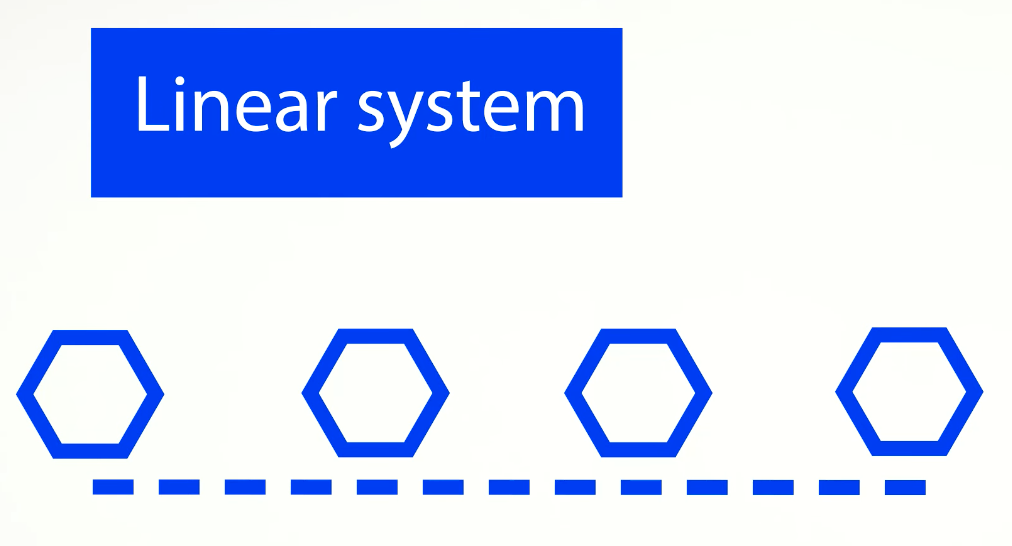
Sistem zasnovan na kompetencijama / Sistem kolekcije
Možete izgraditi sistem zasnovan na broju kompetencija ili setu aktivnosti, gde učenik ima slobodan izbor odakle da počne sa učenjem i sticanjem znački. Unutar jedne kompetencije ili aktivnosti postoji manji pod-sistem znački, koji može biti povezan na linearan način ili fleksibilno. U takvom sistemu, kompetencijska značkа je poput značke prekretnice, koja zahteva da se prethodne „niže“ značke steknu. Možete dizajnirati da li učenik treba da stiče ove značke u određenom redosledu ili na fleksibilan način.
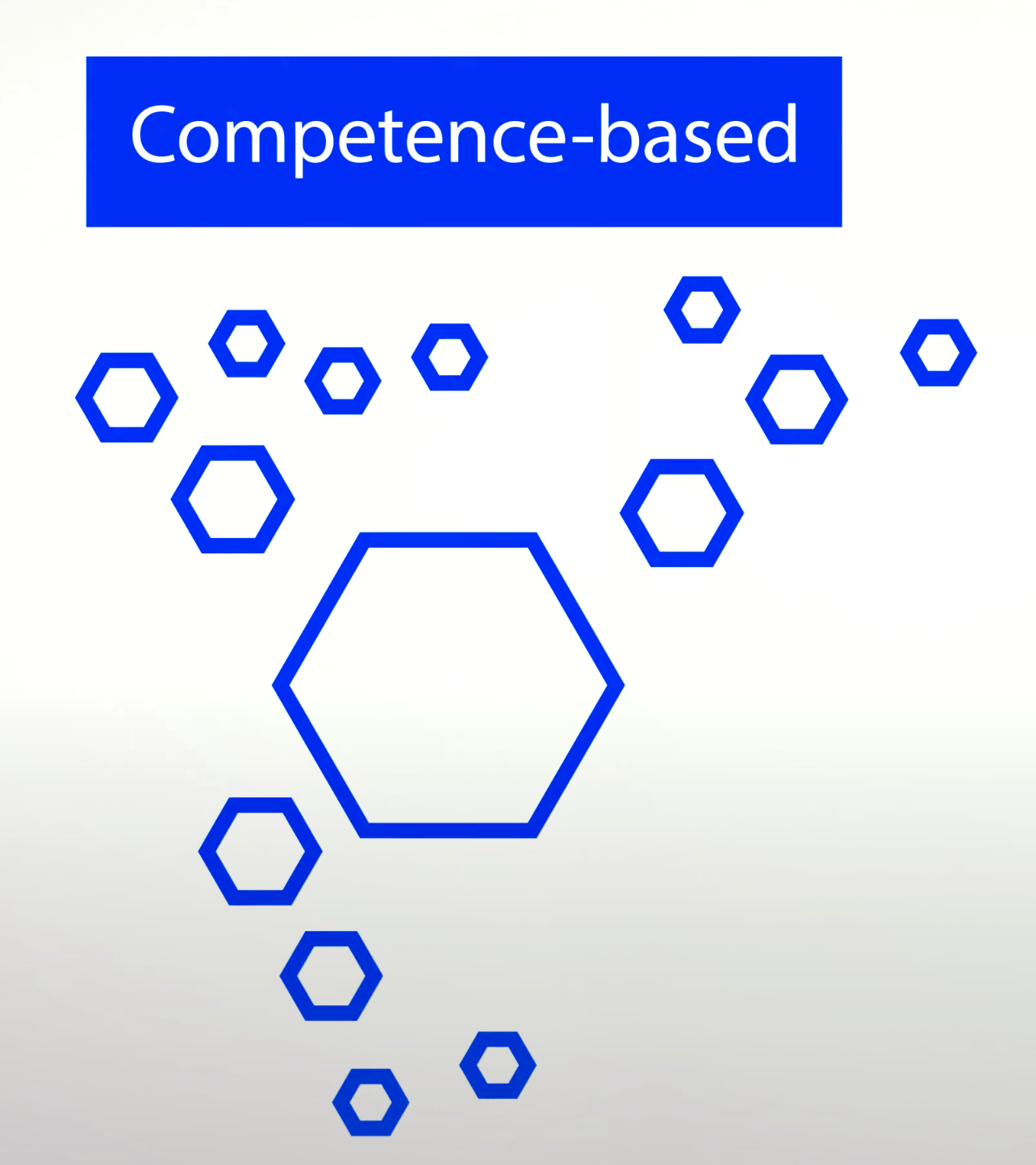
Kombinovani sistem znački
Možda ćete odlučiti da kombinujete nekoliko tipova u jedan pomešani sistem. Na primer, možete imati nekoliko znački za upoznavanje koje pomažu ljudima da razumeju kako značke funkcionišu i koji su ulazni punktovi u vaš sistem znački. Zatim možete ponuditi nekoliko pod-sistema sa nekoliko znački u svakom. Možete ponuditi opcione značke koje se stiču za pokazivanje određenih osobina ili ponašanja. Možda će postojati nekoliko meta-nivo znački koje pokazuju majstorstvo ili jedinstvena postignuća unutar vašeg obrazovnog programa.
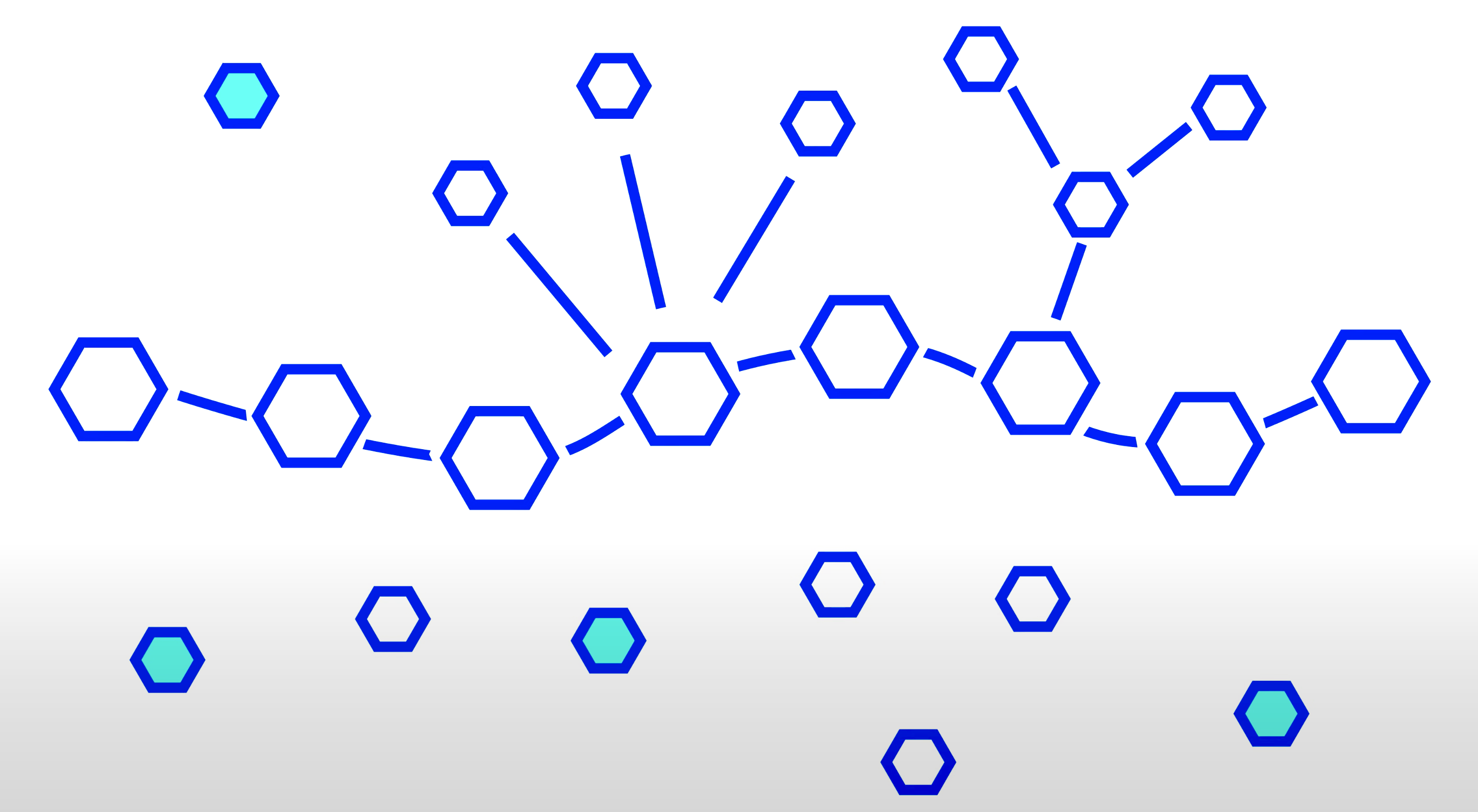
Dizajnirajte svoj sistem znački na način koji je usklađen sa vašim obrazovnim pristupom, ciljevima i obrazovnim standardima.
Pogledajte snimak vebinara o dizajnu sistema znački i istražite nekoliko saveta o tome kako da kreirate tok ocenjivanja za značke, kako da povežete jednu značku s drugom i koji su različiti tipovi sistema znački.
Počnite sa dizajniranjem svog sistema bedževa
Ovde smo koristili metodologiju User Journey, baziranu na praksama Design-Thinking-a.
Započeli smo sa korisničkom personom - Connected Tonny, koji je nedavno počeo da posećuje naš centar za mlade. Fokusirali smo se na stvari koje Tony doživljava, stvari koje voli i preferira u životu.
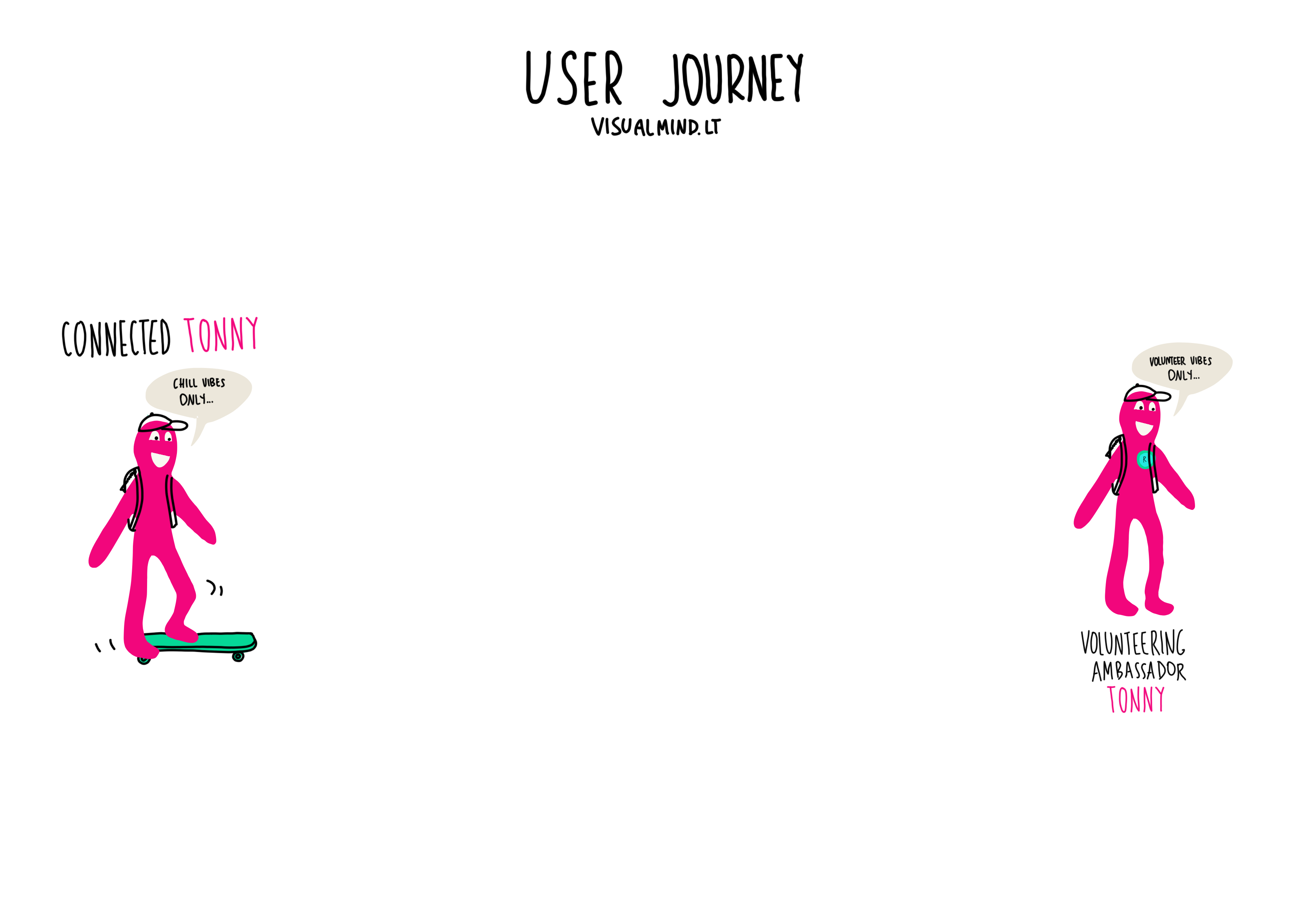
Identifikovali smo koja su ključna iskustva koja očekuju Tonija u našem centru za mlade i koja potencijalno vode ka veštinama i stavovima koji će omogućiti Toniju da se transformiše iz Connected Tony-ja u Volunteering Ambassador Tonny-ja.
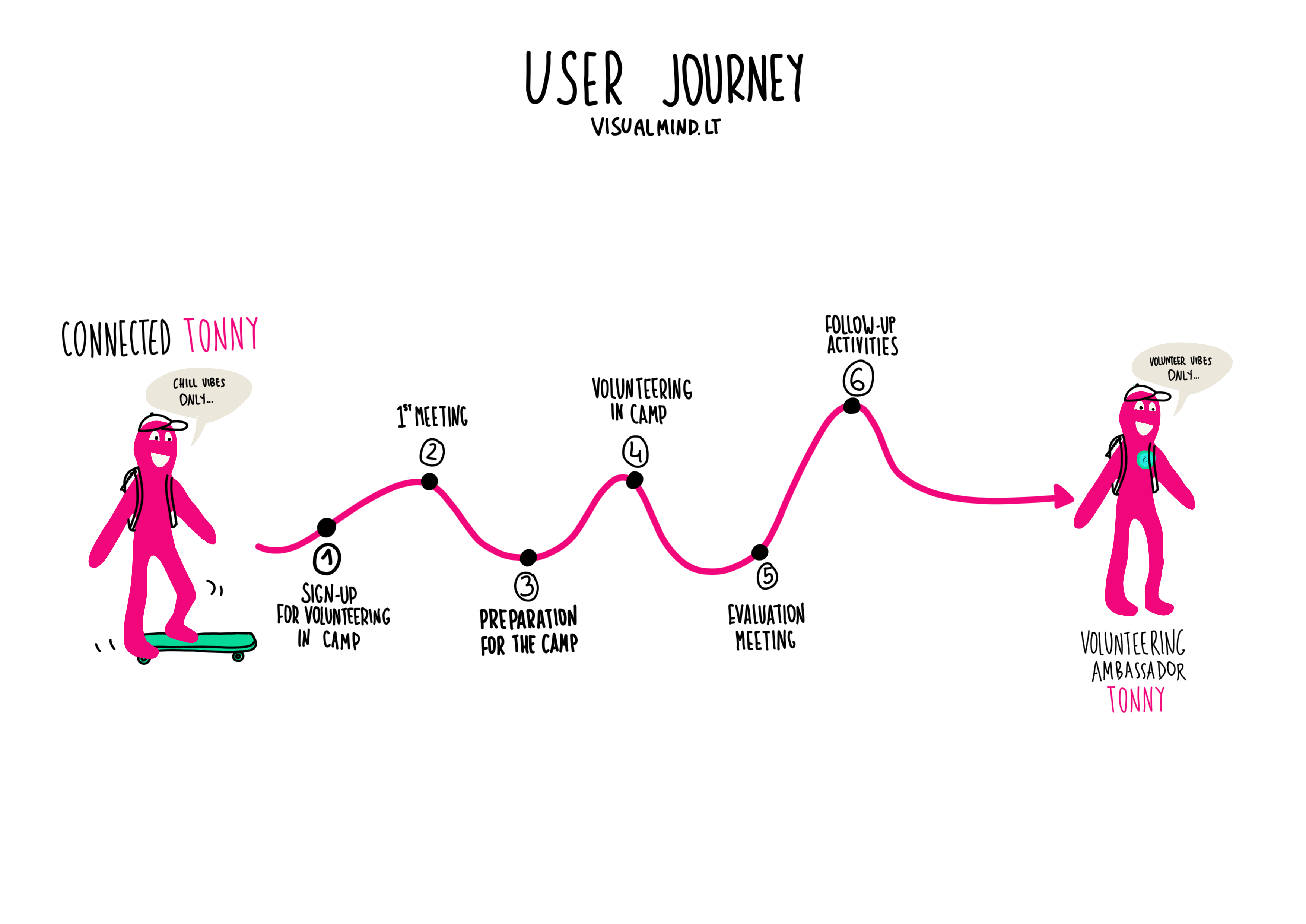
Zatim smo analizirali koji su specifični doživljaji na svakom koraku, koje će aktivnosti biti realizovane i ko će biti uključeni u te aktivnosti.
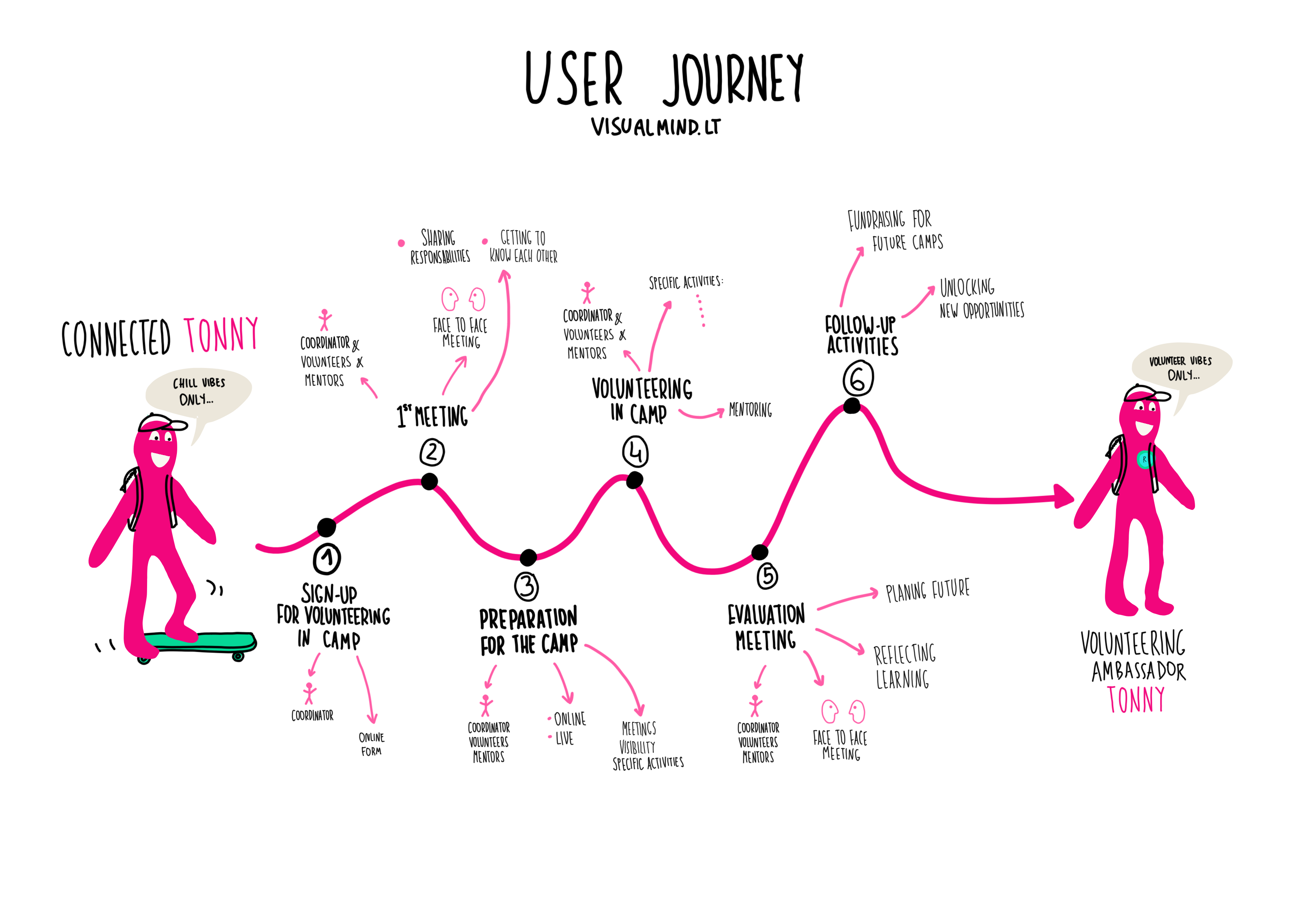
Na kraju smo odlučili kako bedževi mogu podržati Tonyijev put učenja. U nekim trenucima možda će mu biti potrebna motivacija i priznanje za njegov trud, dok će u drugim trenucima možda trebati bedž za povratnu informaciju o njegovim veštinama ili za priznanje uloženih napora. Razlikovali smo različite bedževe označene određenim slovima: P – bedž za učešće, R – bedž za priznanje, PA1 – bedž za učešće u pripremnoj aktivnosti 1, A1 – bedž za učešće i učenje u Aktivnosti 1, PF – bedž za planiranje budućnosti.
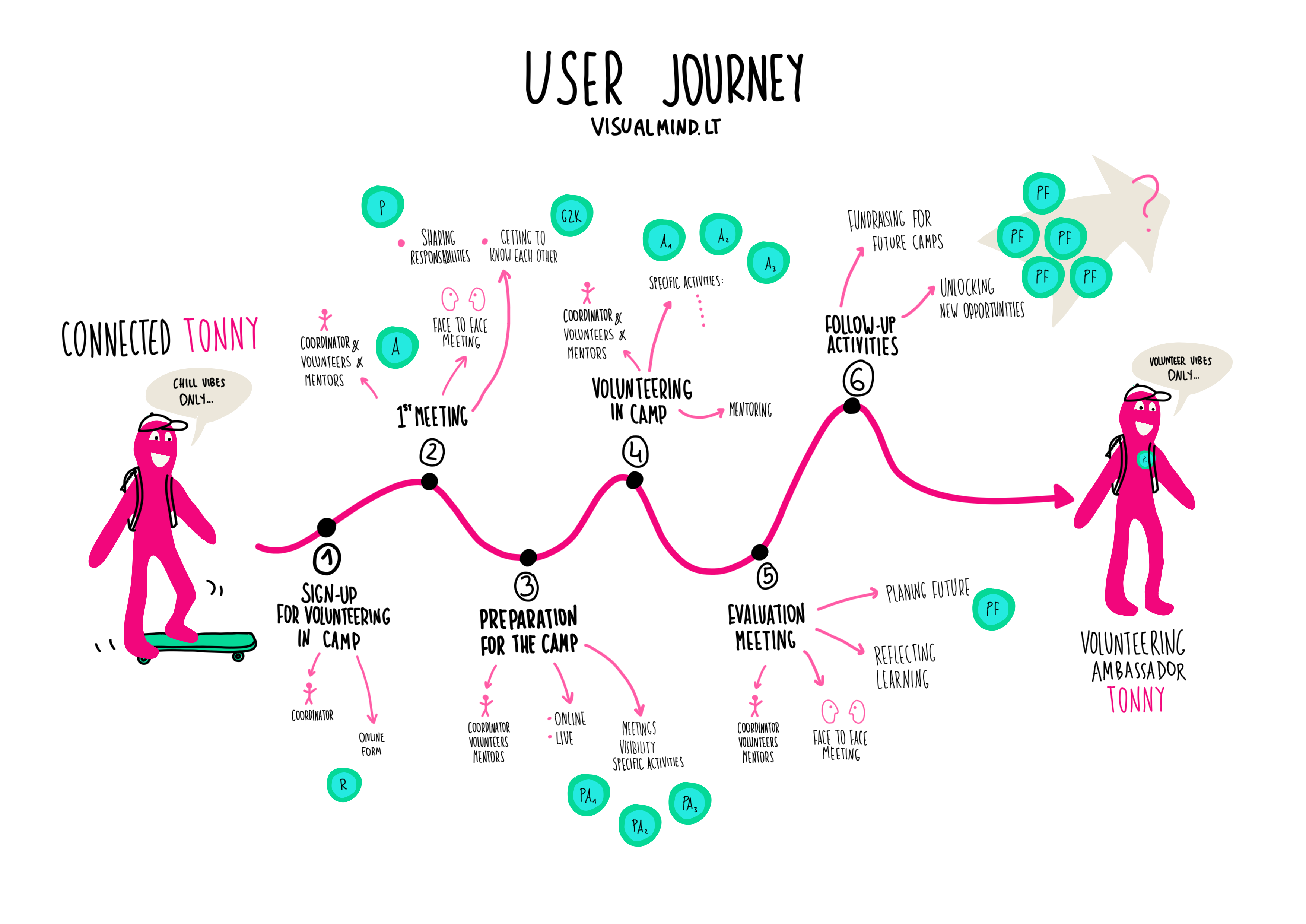
Sada je vreme da svoje ideje stavite u praksu. Ko je vaš učenik? Koje je putovanje vašeg učenika? Gde želite da učenik bude na kraju svog puta i kako bedževi mogu pružiti smisleno podršku?
Idite na badge quest i proverite praktičan zadatak za kreiranje sistema bedževa.

Resursi
- Badges4Good - 12 practices in using Open Badges
- Trusted Badge Systems - building trust and recognition with Open Badges
- Unique Learning Badges - examples of 6 Open Badge systems
- Badge system description template MS Word version
- Modello per la descrizione di un sistema di badge in italiano (Word)
- Ženkliukų sistemos kūrimo šablonas lietuviškai(MS Word)
Preuzmi značku znanja aktivnosti
Bedž sistem dizajner Preuzmi ovu značku znanja
Ovaj bedž pokazuje moje poboljšano razumevanje kako da kreiram sisteme bedževa ili obrazovne puteve zasnovane na bedževima.
Da bih osvojio ovaj bedž, morao sam da pružim jednostavan prototip sistema bedževa za obrazovni proces. Dokazi su pregledani od strane jednog od trenera.
Ovaj bedž je dodeljen kao deo online kursa koji vodi ka postizanju Badge Quality Label.
Zadaci
Zadatak broj1
Dokaz verifikovan od strane: jedan/na organizator/ka aktivnosti
Sada znate koji su glavni koraci za dizajniranje sistema badževa, koji su različiti tipovi badževa i kako ih povezati u obrazovni put.
Odaberite projekat, program ili neki oblik obrazovnog procesa koji organizujete ili u kojem učestvujete kao učenik. Uzmite papir i olovku ili koristite digitalne alate da nacrtate obrazovni put od početka do kraja. Razmislite i vizualizujte na kojem mestu obrazovnog puta bi badževi mogli biti korisni i koji tip badža bi odgovarao tom specifičnom trenutku: za uvođenje (onboarding), angažman, motivaciju, prepoznavanje, zabavu itd.
Napravite fotografiju puta, dodajte dodatna objašnjenja i postavite je ovde kao dokaz.
Alternativno, možete početi da opisujete svoje badževe koristeći formu prema ovom šablonu [link ka šablonu] i postavite je ovde.
Badž će biti dodeljen kada evidenciju pregleda i prihvati bar jedan trener.
Organizatori
Cities of Learning Network
Badge issuer recognized with
Badgecraft drži i razvija ovu platformu sa vodećim obrazovnim organizacijama. Program Evropske unije Erasmus+ odobrio je sufinansiranje za izradu prve verzije ove platforme. Kontaktirajte support@badgecraft.eu.
Platforma
Promenite na drugi jezik:

